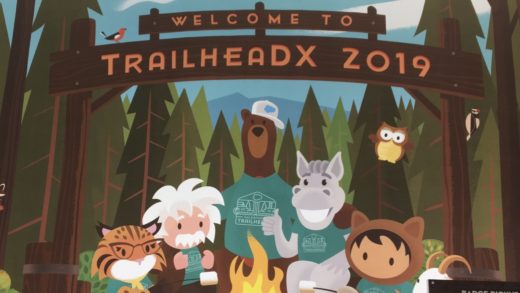Facebook’s Libra has sucked up most of the oxygen in the blockchain news cycle of late, but let’s talk about Salesforce. At their TrailheaDX developer conference, Salesforce announced that they will throw their hat in the ring with their low-code blockchain service.
There are two primary reasons I think the Salesforce blockchain play is interesting.
Enterprise Blockchain is a Business Problem
Blockchain is an oft maligned technology. People routinely approach vendors peddling blockchain solutions with either skepticism or confusion, and the heart of the resistance is trying to understand why and when the tool makes sense.
I suspect one of the reasons that blockchain is often dismissed in technical communities is precisely the reason that Salesforce’s blockchain positioning is interesting: finding the right use case for blockchain is much more important than the technical implementation of blockchain.
To help illustrate this point, let’s visit some of the messaging from IBM. IBM is one of the early enterprise players in blockchain, and one of the things we’ve heard from them time and again is that blockchain is more of a business problem than a technological problem. As IBM CEO Ginni Rometty said about blockchain, “Greatness isn’t having a technology, but the know how to do something with it.”
The goal is not to offer a blockchain solution, but rather to find a solution that ties together components from real clients, real networks, and real business outcomes. Given that backdrop, it is particularly interesting that:
1) the typical purview of the Salesforce platform is addressing CRM/sales questions, and there is a very direct financial tie between sales investments and “real business outcomes”
2) Salesforce Admins and Salesforce Developers tend to be more embedded in the business than your “typical” developer
3) Salesforce is proposing a declarative, low-code blockchain platform operated primarily on “clicks, not code”
All together this indicates that Salesforce has a cadre of users primed to address business problems and a tool that is ready to accommodate them. If blockchain is 80% a business problem, 20% a technology problem, then Salesforce has notable strategic positioning in the space.
A Focus on Language as it Relates to Accessibility
What I most loved about Leah McGowen-Hare’s keynote presentation was her notable attention to language. It was evident that she and the team had been deliberate in choosing descriptors of the technology that were informative while also including a minimal amount of jargon. Blockchain was put in terms that average Salesforce users are already familiar with.
Nodes on the network were introduced, but they were primarily referred to as partners. The demo showed how to interact with blocks as you would any other Salesforce object. Key blockchain concepts, like immutability of records were described in perhaps the most entertaining way:
Ha ha @LeahBMH has the best explanations for complicated technical stuff:
"Once a record is on the blockchain, it's immutable. It cannot be changed – that'd be like trying to take a chicken nugget and turn it back into a chicken.
Not gonna happen."
— Sarah Mei (@sarahmei) June 3, 2019
“Smart contracts” were nowhere to be found. “Ledger” didn’t come up, let alone “Hyperledger Sawtooth.” McGowen-Hare clearly worked hard to abstract her descriptions of the blockchain problem space enough to make them accurate but not overwhelming.
The spirit of the Salesforce developer community is to make things accessible, and the team very clearly tried to make blockchain technology less intimidating through their choice of language.
The combination of strategic positioning and low-code accessibility will make the Salesforce blockchain offering interesting to watch.
Disclaimer: Salesforce is a client and paid my T&E to TrailheaDX. IBM is also a client.

No Comments